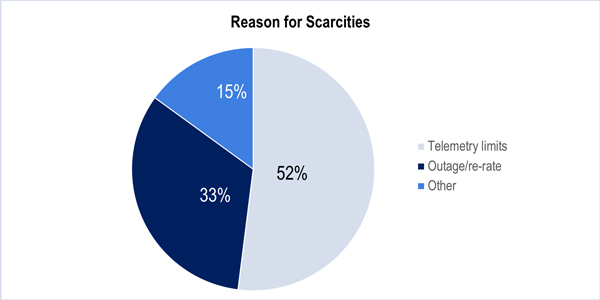By Jason Fordney
CAISO will make permanent a once-temporary practice of boosting its power reserves to account for utility-scale solar tripping offline because of an inverters problem, something NERC has identified as a major reliability issue.
When solar generation is at its peak, CAISO will set the operating reserve target at either 15% of the total solar production forecast or the maximum NERC/Western Electricity Coordination Council requirement, whichever is greater.
The ISO has worked with solar operators to reprogram inverters since last year, CAISO Shift Supervisor John Phipps said Monday at a Market Performance and Planning Forum. Some of the inverters began working properly after reprogramming, but others are hard-wired and still subject to tripping. Phipps said 2,700-2,800 MW of generation across the whole ISO system cannot be reprogrammed.
“They are not in any one regional area; they are spread out across all the plants in California,” Phipps said during a presentation, adding that the issue is not affecting behind-the-meter or storage resources.
The inverters, which convert photovoltaic DC output to utility frequency AC, sometimes trip offline to protect the systems during voltage fluctuations. CAISO began procuring additional reserves a year ago, after the problem occurred in August 2016 because the Blue Cut fire in Cajon Pass caused transmission line faults and disconnected 1,200 MW of solar. (See CAISO Boosts Reserves After August Event Report.)
CAISO CEO Steve Berberich last month cautioned the ISO’s Board of Governors about the seriousness of the problem, which caused the loss of 860 MW of solar resources on April 20. (See CAISO Board Approves Forecast Error Measures.)
The inverter problems have so far triggered two NERC alerts, one on June 20, 2017, and the other on May 1 of this year. NERC said the problem could also affect non-bulk power systems and recommended all operators follow recommendations spelled out in the more recent alert.
“While this NERC alert focuses on solar PV, we encourage similar activities for other inverter-based resources such as, but not limited to, battery energy storage and wind resources,” the agency said in the May 1 alert.
Ancillary Service Scarcity Increases
CAISO has seen an increase in ancillary service scarcity events in the real-time market, Director of Market Analysis and Forecasting Guillermo Bautista Alderete told the forum. He said while the number of incidents has increased, the magnitudes are small, with about 75% of the scarcities at fewer than 10 MW. The increased incidents stem from a confluence of factors and changes in the market, he said, including the solar operating reserve requirement.
Most recently, CAISO issued three notices of ancillary service scarcity events for May 3-6, May 15 and May 23-28, nearly all of which were associated with regulation up service and mostly in the SP26_EXP region in Southern California. In 2018, 46% of the scarcities happened in SP26_EXP, 35% in NP26_EXP and 19% in CAISO_EXP.
CAISO pays an ancillary services scarcity price when it is unable to procure the target quantity of one or more ancillary services in the integrated forward market or real-time market runs. About 52% of the scarcities are due to limits in generator telemetry, which is the process whereby a generator supplies the ISO with real-time data. Mismatches between telemetry and real-time needs require the ISO to procure additional capacity in the real-time market. About 33% are due to generator outages and re-rates, and 15% are categorized as “other.”
CAISO’s Market Monitor in its 2017 State of the Market report noted that scarcity events in the real-time market “increased significantly” from 26 in 2016 to 54 in 2017.





